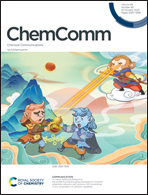Capacitive deionization system with ultra-high salt adsorption performance: from lab design to agricultural applications
Abstract
Capacitive deionization is an emerging water desalination technology for industrial applications. Recent advancements in electrode design and system development have led to the reporting of ultra-high salt adsorption performance, benefiting its potential application in agricultural water treatment at a potentially low cost. In this study, we provide a comprehensive summary of the porous electrode design strategy to achieve ultra-high ion adsorption performance, considering factors such as experimental parameters, chemically tuned material properties, redox chemistry and smart nanoarchitecture for future electrode design. Furthermore, we endeavor to establish a correlation between capacitive deionization (CDI) technology and its applicability in the agricultural sector, specifically concentrating on water treatment with an emphasis on undesirable ions associated with salinity, hardness, and heavy metals, to achieve harmless irrigation. Additionally, to ensure the efficient and cost-effective application of CDI systems in agriculture, a thorough overview of the literature on CDI cost analysis is presented. By addressing these aspects, we anticipate that ultra-high salt adsorption CDI systems hold great promise in future agricultural applications.



 Please wait while we load your content...
Please wait while we load your content...